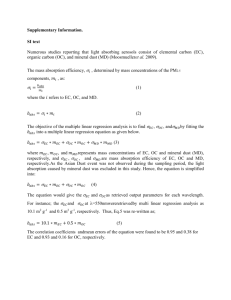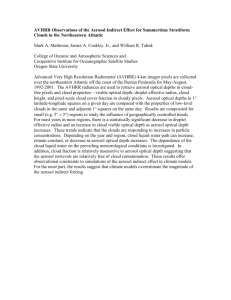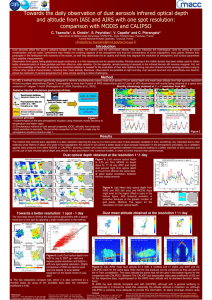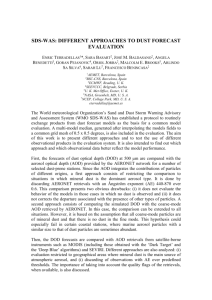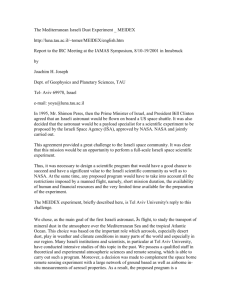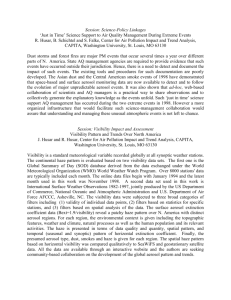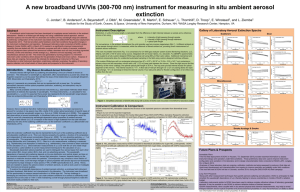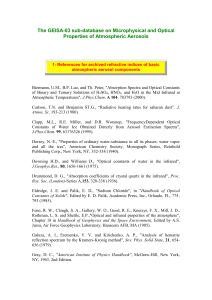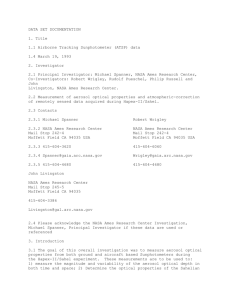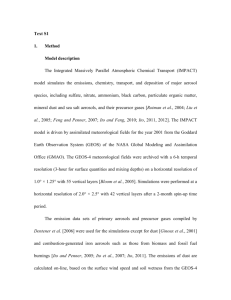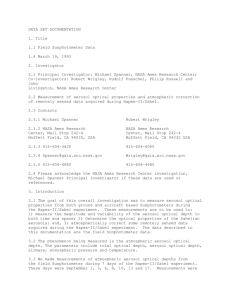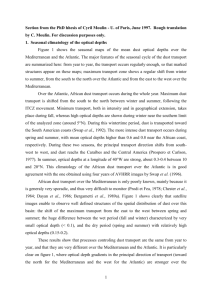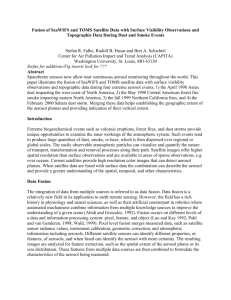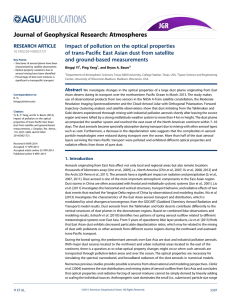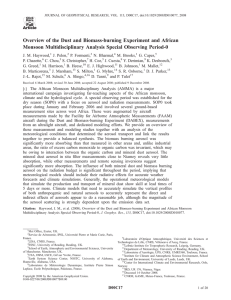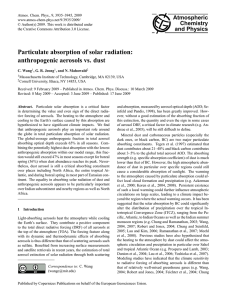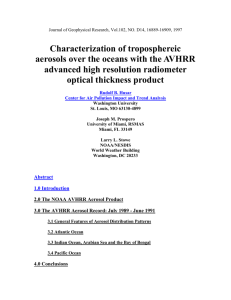Characterizing Mineral Dust for Surveillance Purposes The purpose
advertisement
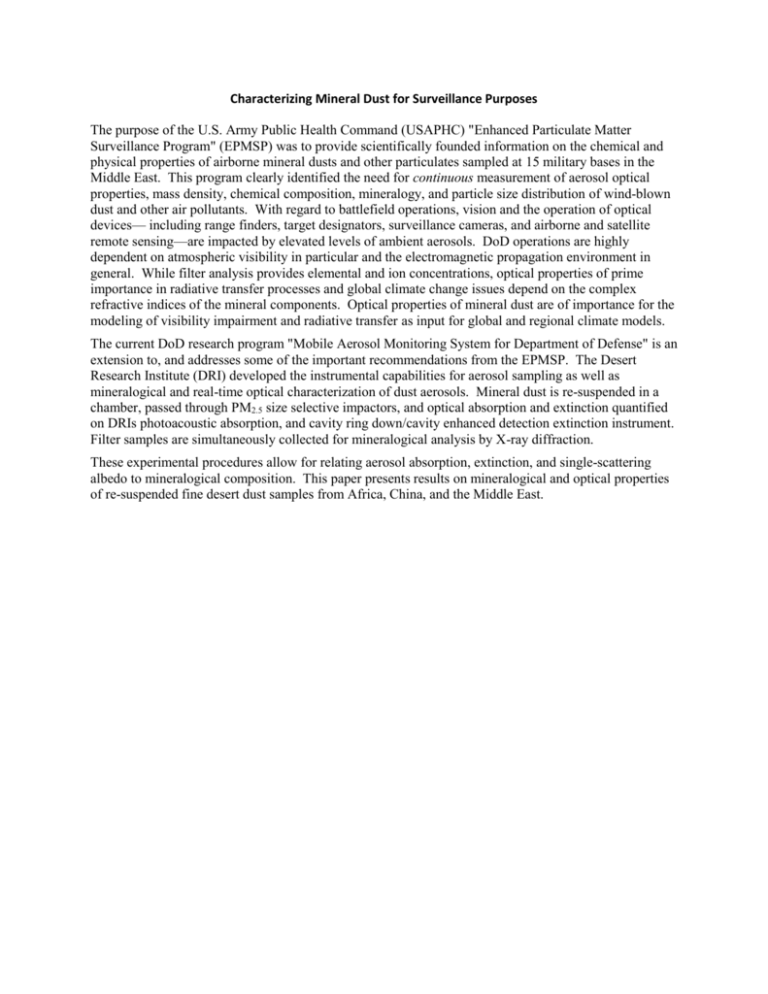
Characterizing Mineral Dust for Surveillance Purposes The purpose of the U.S. Army Public Health Command (USAPHC) "Enhanced Particulate Matter Surveillance Program" (EPMSP) was to provide scientifically founded information on the chemical and physical properties of airborne mineral dusts and other particulates sampled at 15 military bases in the Middle East. This program clearly identified the need for continuous measurement of aerosol optical properties, mass density, chemical composition, mineralogy, and particle size distribution of wind-blown dust and other air pollutants. With regard to battlefield operations, vision and the operation of optical devices— including range finders, target designators, surveillance cameras, and airborne and satellite remote sensing—are impacted by elevated levels of ambient aerosols. DoD operations are highly dependent on atmospheric visibility in particular and the electromagnetic propagation environment in general. While filter analysis provides elemental and ion concentrations, optical properties of prime importance in radiative transfer processes and global climate change issues depend on the complex refractive indices of the mineral components. Optical properties of mineral dust are of importance for the modeling of visibility impairment and radiative transfer as input for global and regional climate models. The current DoD research program "Mobile Aerosol Monitoring System for Department of Defense" is an extension to, and addresses some of the important recommendations from the EPMSP. The Desert Research Institute (DRI) developed the instrumental capabilities for aerosol sampling as well as mineralogical and real-time optical characterization of dust aerosols. Mineral dust is re-suspended in a chamber, passed through PM2.5 size selective impactors, and optical absorption and extinction quantified on DRIs photoacoustic absorption, and cavity ring down/cavity enhanced detection extinction instrument. Filter samples are simultaneously collected for mineralogical analysis by X-ray diffraction. These experimental procedures allow for relating aerosol absorption, extinction, and single-scattering albedo to mineralogical composition. This paper presents results on mineralogical and optical properties of re-suspended fine desert dust samples from Africa, China, and the Middle East.


